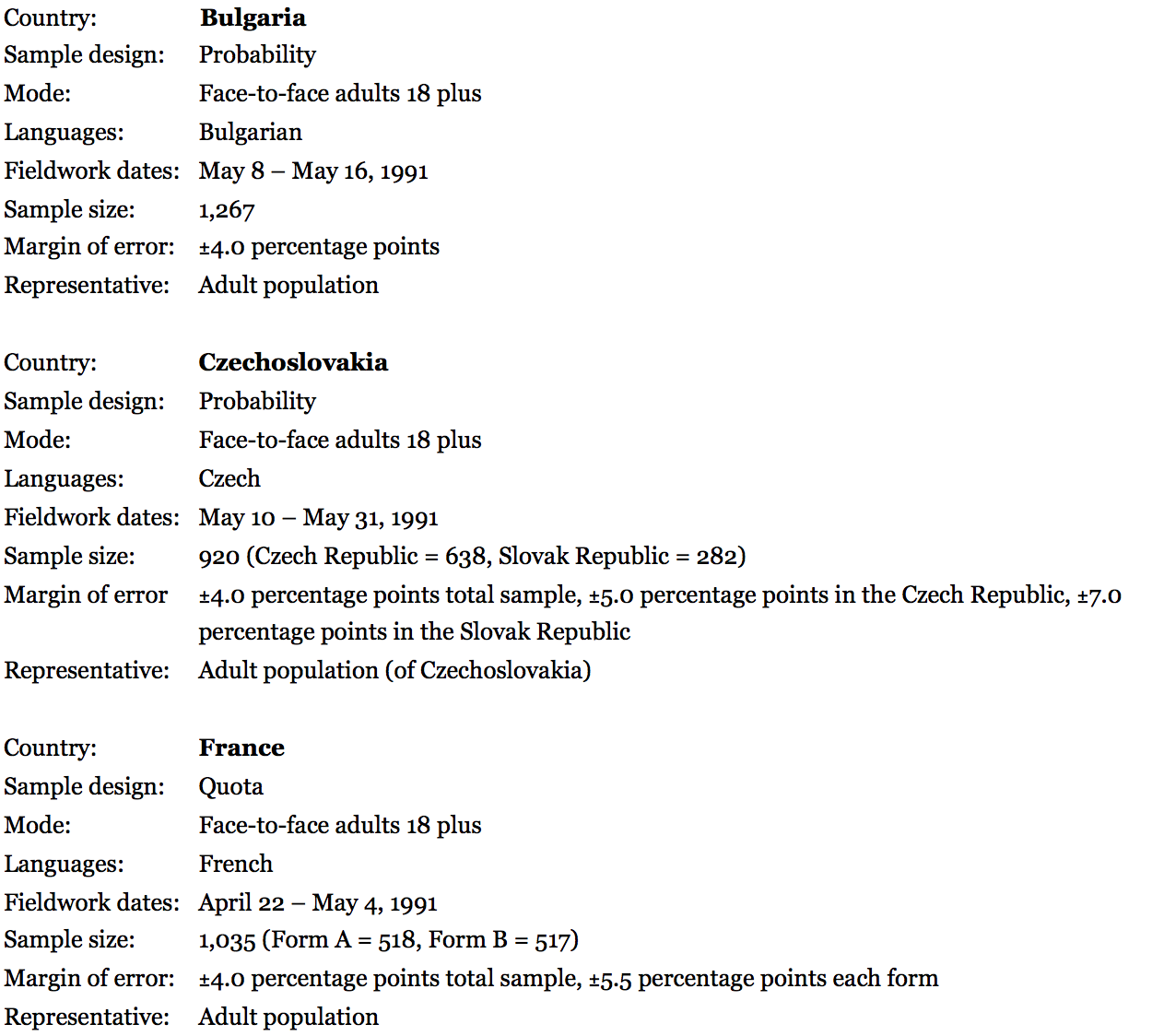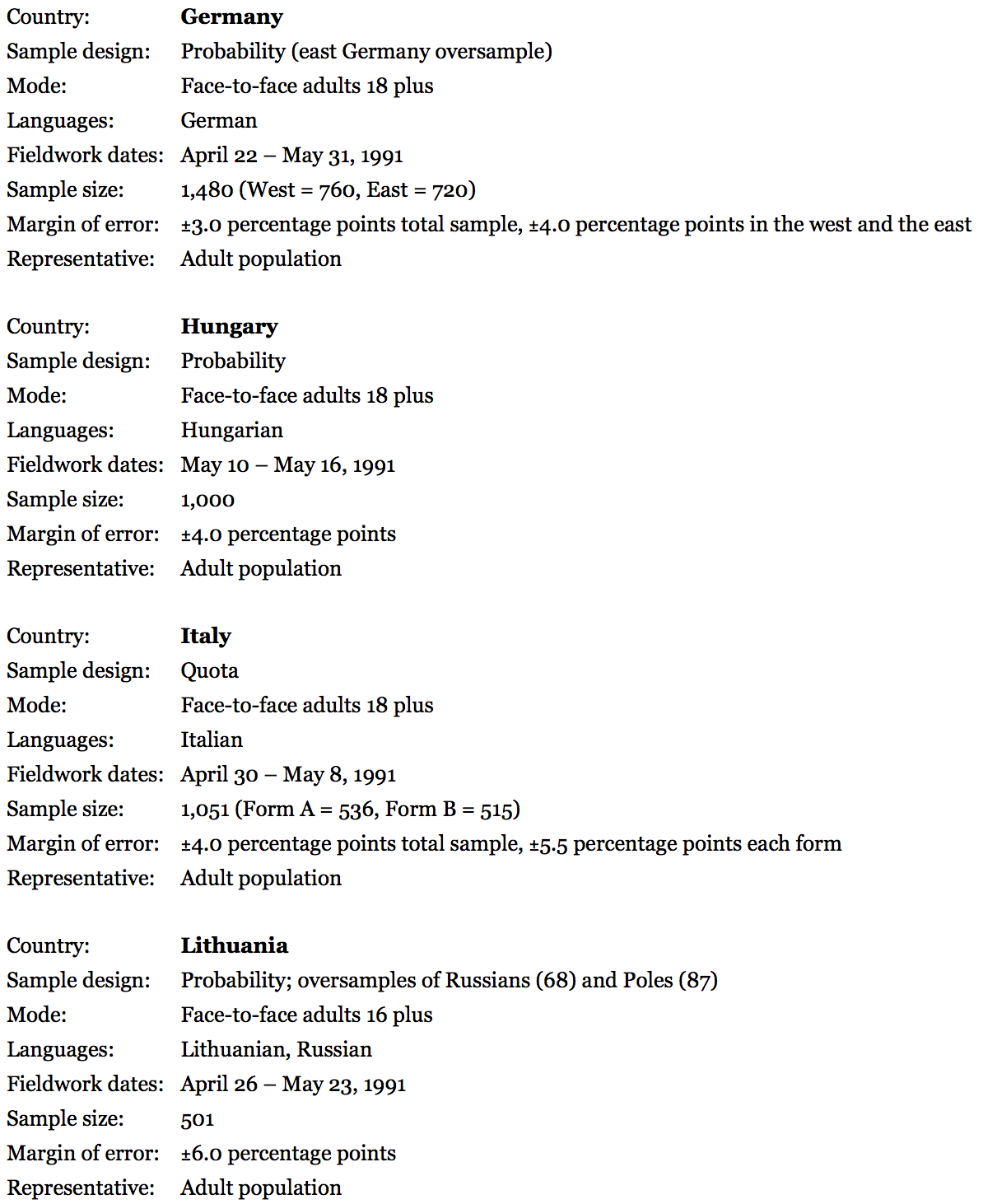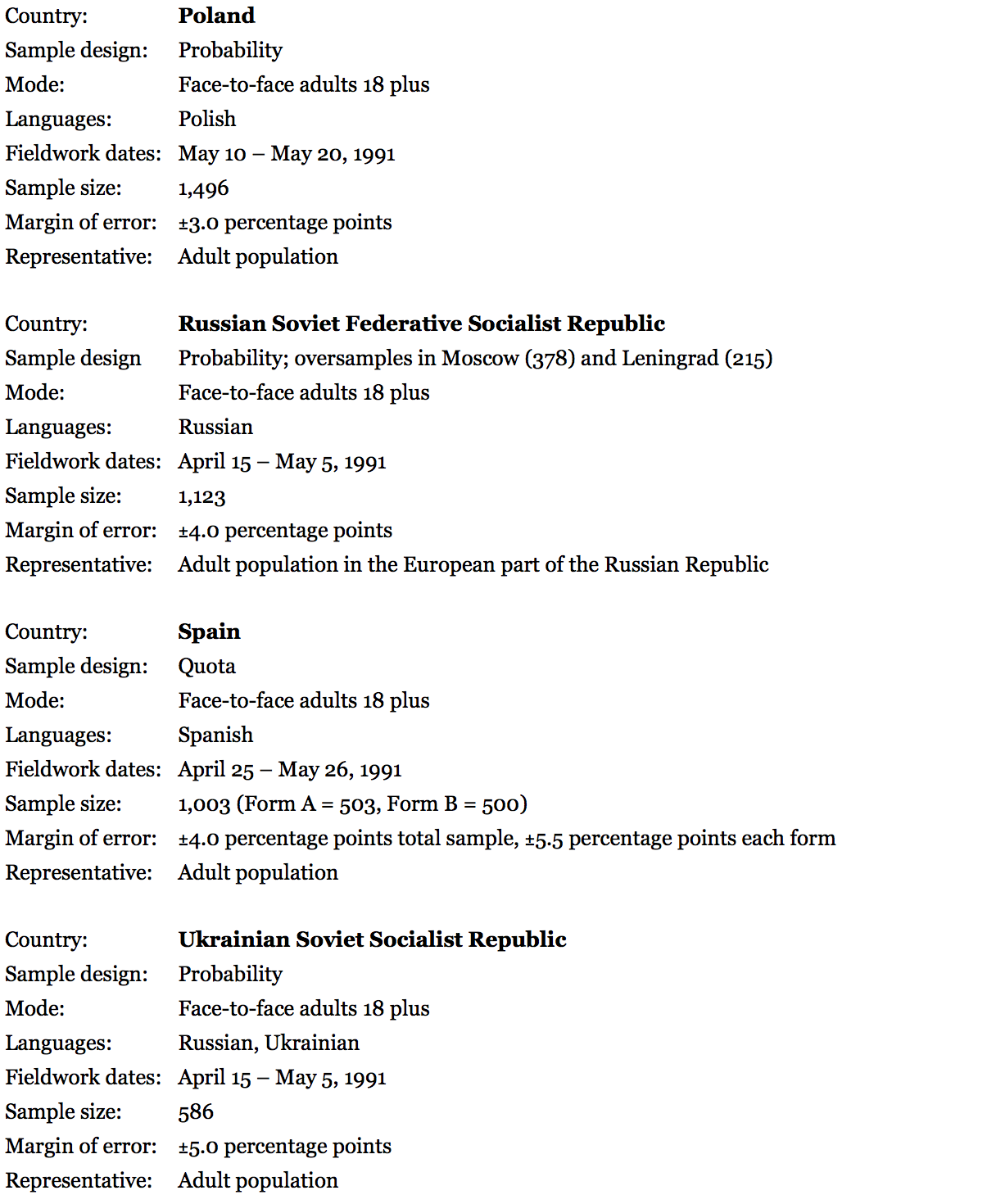About Pew Research Center’s Spring 2019 Global Attitudes Survey
Results for the survey are based on telephone and face-to-face interviews conducted under the direction of Gallup and Abt Associates. The results are based on national samples, unless otherwise noted. More details about our international survey methodology and country-specific sample designs are available here.
About Times Mirror Center’s Spring 1991 Pulse of Europe Survey
This report reexamines many key questions included in a survey conducted April 15 to May 31, 1991, by the Times Mirror Center for the People & the Press (the forerunner of Pew Research Center). For that survey, interviews were conducted in local languages with 12,569 people in Bulgaria, Czechoslovakia, France, Germany, Hungary, Italy, Poland, Spain and the United Kingdom, as well as three republics of the Soviet Union: Lithuania, Russia and Ukraine. All samples were nationally representative, with the exception of Russia, which did not include respondents living east of the Ural Mountains.
Methodological notes:
- Even though in 1991 Czechoslovakia was surveyed as a single country, for the purposes of this report, we show the 1991 results for the geographic areas that correspond to the present-day Czech Republic and Slovakia. The 1991 survey included 638 responses from geographic areas corresponding to the present-day Czech Republic and 282 responses from areas corresponding to present-day Slovakia.
- Survey coverage in Ukraine since 2015 has excluded Crimea, as well as areas under conflict in the eastern districts of Luhansk and Donetsk. These areas were included in the survey in 2014 and earlier. Throughout this report, we include all years for comparison, even as these deviations reflect changes in the composition of the Ukrainian population. In all years when Crimea was included, it represented less than 10% of the total weighted sample, limiting the effect of its exclusion on survey estimates for Ukraine as a whole.
- In 1991, Germany was a reunited country. Analysis in this report compares results for geographic areas that correspond to the former East Germany, including East Berlin, and former West Germany, including West Berlin.
- In 1991, the adult population was defined as ages 16 years and older in Lithuania and the UK. The Hungarian sample from that year also includes a small number of 17-year-old respondents. The total number of respondents under 18 years old in the 1991 survey is as follows:
- Hungary: 2
- Lithuania: 20
- UK: 12
In all other countries and survey years, the adult population is defined as ages 18 and older.
The following pages present the details on the methodology for the 1991 survey, including information on sample design, survey mode, the languages in which the interviews were conducted, fieldwork dates, sample sizes and the margins of sampling error based on all interviews conducted in that country.








